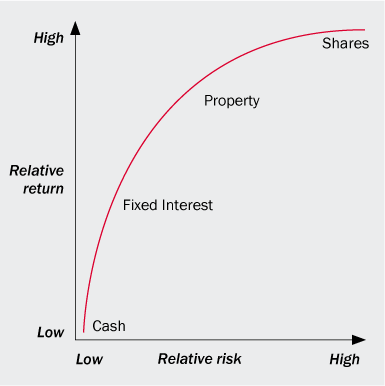Investment

Investment or investing[1] is a term with several closely-related meanings in business management, financeand economics, related to saving or deferring consumption. Investing is the active redirection of resources: from being consumed today, to creating benefits in the future; the use of assets to earn income or profit.[2] An investment is a choice by an individual or an organization such as a pension fund, after at least some careful analysis or thought, to place or lend money in a vehicle (e.g. property, stock securities, bonds) that has sufficiently low risk and provides the possibility of generating returns over a period of time.[3] Placing or lending money in a vehicle that risks the loss of the principal sum or that has not been thoroughly analyzed is, by definition speculation, not investment.[4]
In the case of investment, rather than store the good produced or its money equivalent, the investor chooses to use that good either to create a durable consumer or producer good, or to lend the original saved good to another in exchange for either interest or a share of the profits. In the first case, the individual creates durable consumer goods, hoping the services from the good will make his life better. In the second, the individual becomes an entrepreneur using the resource to produce goods and services for others in the hope of a profitable sale. The third case describes a lender, and the fourth describes an investor in a share of the business. In each case, the consumer obtains a durable asset or investment, and accounts for that asset by recording an equivalent liability. As time passes, and both prices and interest rates change, the value of the asset and liability also change.
An asset is usually purchased, or equivalently a deposit is made in a bank, in hopes of getting a future return or interest from it. The word originates in the Latin "vestis", meaning garment, and refers to the act of putting things (money or other claims to resources) into others' pockets. See Invest. The basic meaning of the term being an asset held to have some recurring or capital gains. It is an asset that is expected to give returns without any work on the asset per se. The term "investment" is used differently in economics and in finance. Economists refer to a real investment (such as a machine or a house), while financial economists refer to a financial asset, such as money that is put into a bank or the market, which may then be used to buy a real asset.
Contents |
In business management
The investment decision (also known as capital budgeting) is one of the fundamental decisions of business management: Managers determine the investment value of the assets that a business enterprise has within its control or possession. These assets may be physical (such as buildings or machinery), intangible (such aspatents, software, goodwill), or financial (see below). Assets are used to produce streams of revenue that often are associated with particular costs or outflows. All together, the manager must determine whether the net present value of the investment to the enterprise is positive using the marginal cost of capital that is associated with the particular area of business.
In terms of financial assets, these are often marketable securities such as a company stock (an equity investment) or bonds (a debt investment). At times the goal of the investment is for producing future cash flows, while at others it may be for purposes of gaining access to more assets by establishing control or influence over the operation of a second company (the investee).
In economics
In economics, investment is the production per unit time of goods which are not consumed but are to be used for future production. Examples include tangibles (such as building a railroad or factory) and intangibles (such as a year of schooling or on-the-job training). In measures of national income and output, gross investment(represented by the variable I) is also a component of Gross domestic product (GDP), given in the formula GDP= C + I + G + NX, where C is consumption, G is government spending, and NX is net exports. Thus investment is everything that remains of production after consumption, government spending, and exports are subtracted.
Both non-residential investment (such as factories) and residential investment (new houses) combine to make up I. Net investment deducts depreciation from gross investment. It is the value of the net increase in the capital stock per year.
Investment, as production over a period of time ("per year"), is not capital. The time dimension of investment makes it a flow. By contrast, capital is a stock, that is, an accumulation measurable at a point in time (say December 31).
Investment is often modeled as a function of Income and Interest rates, given by the relation I = f(Y, r). An increase in income encourages higher investment, whereas a higher interest rate may discourage investment as it becomes more costly to borrow money. Even if a firm chooses to use its own funds in an investment, the interest rate represents an opportunity cost of investing those funds rather than lending out that amount of money for interest.

